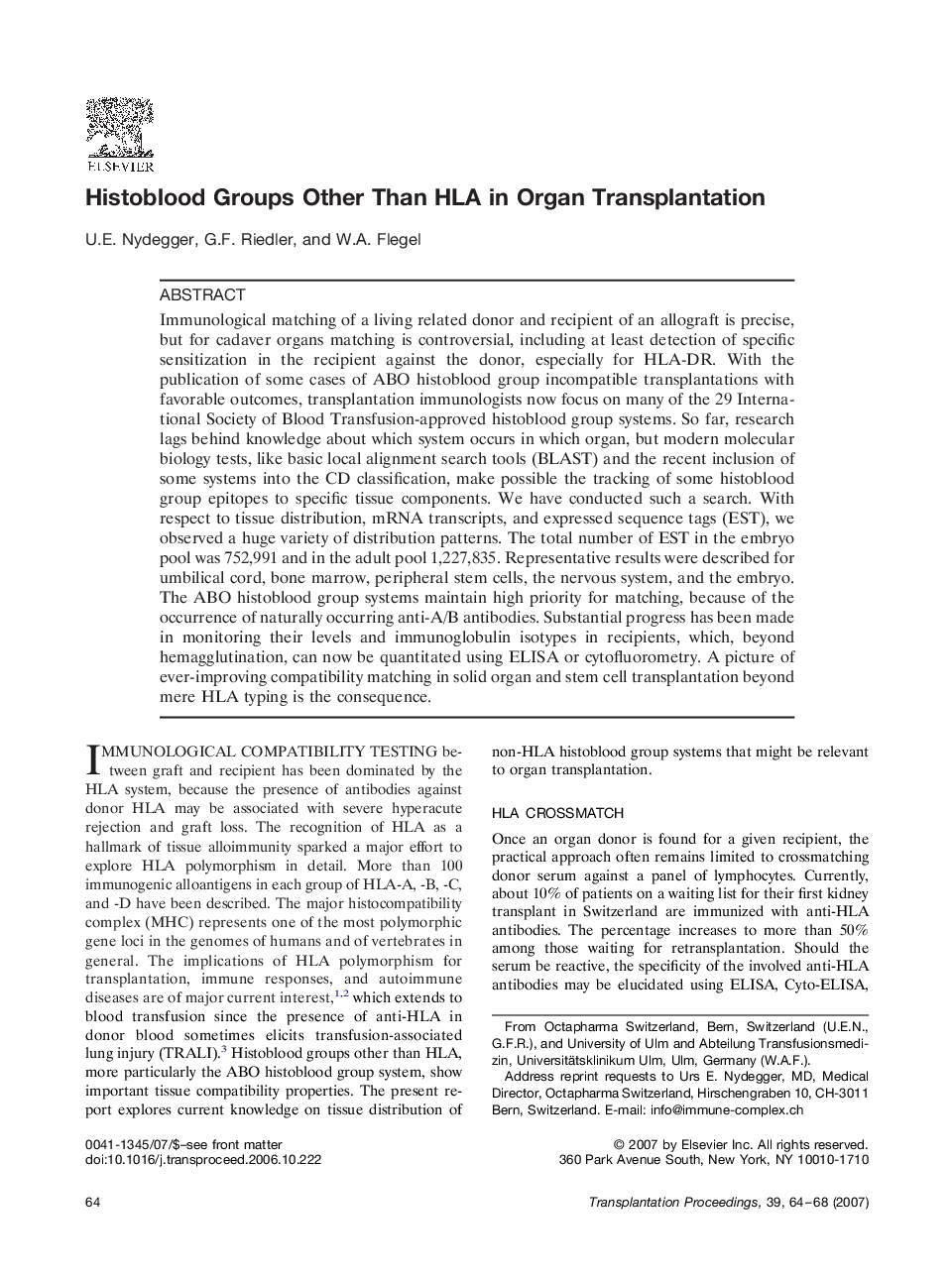| Article ID | Journal | Published Year | Pages | File Type |
|---|---|---|---|---|
| 4262912 | Transplantation Proceedings | 2007 | 5 Pages |
Immunological matching of a living related donor and recipient of an allograft is precise, but for cadaver organs matching is controversial, including at least detection of specific sensitization in the recipient against the donor, especially for HLA-DR. With the publication of some cases of ABO histoblood group incompatible transplantations with favorable outcomes, transplantation immunologists now focus on many of the 29 International Society of Blood Transfusion-approved histoblood group systems. So far, research lags behind knowledge about which system occurs in which organ, but modern molecular biology tests, like basic local alignment search tools (BLAST) and the recent inclusion of some systems into the CD classification, make possible the tracking of some histoblood group epitopes to specific tissue components. We have conducted such a search. With respect to tissue distribution, mRNA transcripts, and expressed sequence tags (EST), we observed a huge variety of distribution patterns. The total number of EST in the embryo pool was 752,991 and in the adult pool 1,227,835. Representative results were described for umbilical cord, bone marrow, peripheral stem cells, the nervous system, and the embryo. The ABO histoblood group systems maintain high priority for matching, because of the occurrence of naturally occurring anti-A/B antibodies. Substantial progress has been made in monitoring their levels and immunoglobulin isotypes in recipients, which, beyond hemagglutination, can now be quantitated using ELISA or cytofluorometry. A picture of ever-improving compatibility matching in solid organ and stem cell transplantation beyond mere HLA typing is the consequence.
